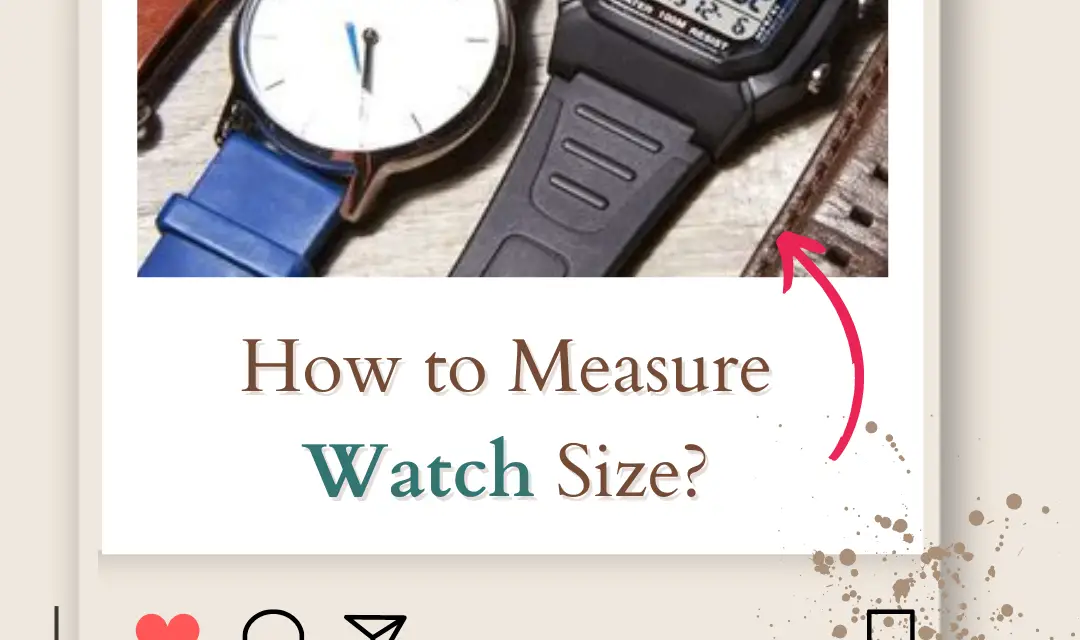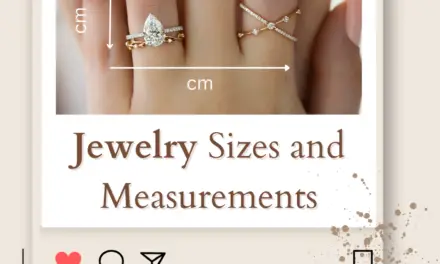Choosing a watch transcends aesthetics. While style matters, ensuring proper fit is crucial for comfort and optimal wear. But with various watch sizes and technical terms thrown around, determining the right fit can feel overwhelming.
Fear not, watch enthusiasts! This guide simplifies how to measure watch size, equipping you to select a timepiece that complements your style and sits comfortably on your wrist.
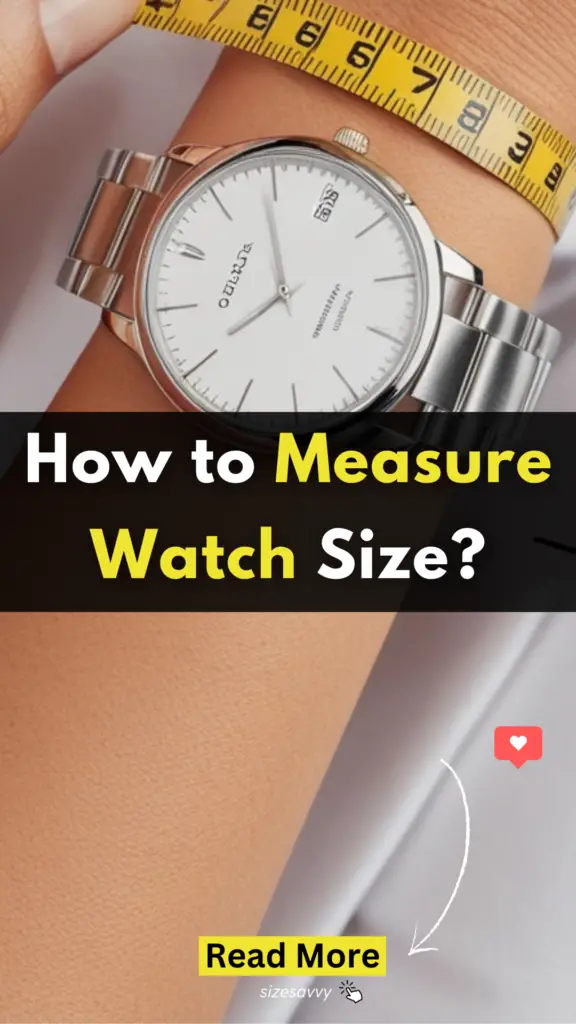
Note: for women only Bangle Size and watch size are completely different. and know your Measure Sleeve Size before buying any watch online. for men to know your suit size if you are planning to match it with a Branded Suit.
Arm Yourself with the Right Tools:
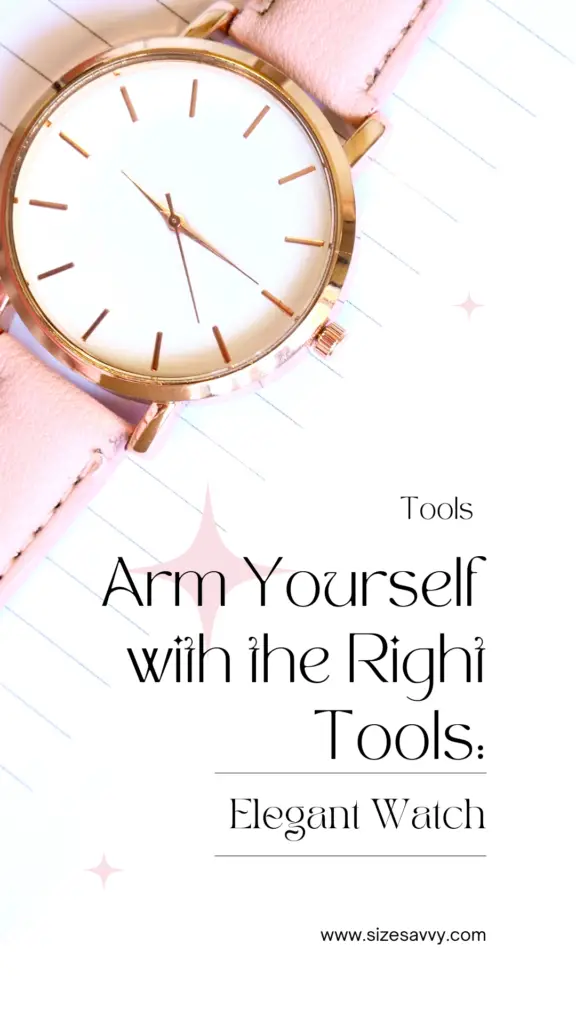
- Caliper: This precision tool boasts two adjustable jaws, allowing you to precisely measure the watch case’s diameter and thickness.
- Ruler: While less accurate, a ruler can be a temporary substitute for a caliper. However, it might not be ideal for curved cases.
What to Measure in Watch:
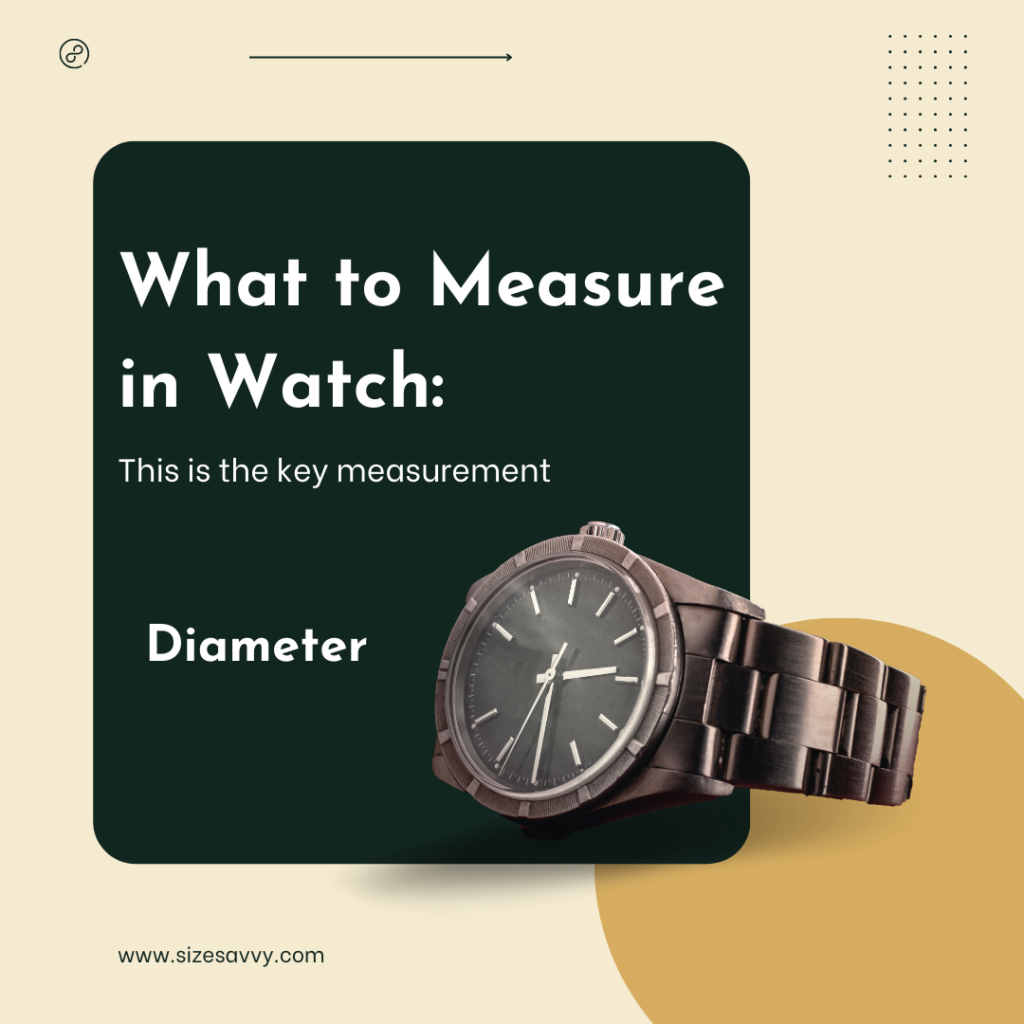
- Case Diameter: This is the key measurement, representing the distance across the widest part of the watch case, excluding the crown and any push buttons.
- Lug-to-Lug Distance: This less common measurement helps understand how the watch will fit your wrist. It refers to the distance between the tips of the lugs, where the strap or bracelet attaches.
Watch Measuring Steps:
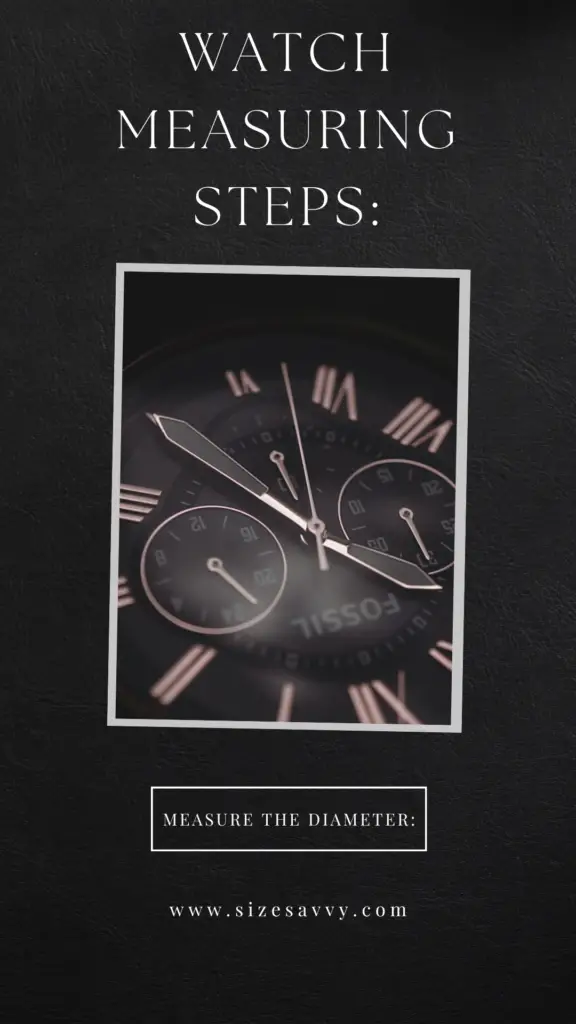
- Prepare the Watch: Lay the watch face down on a flat surface.
- Measure the Diameter:
- Using a Caliper: Gently open the caliper jaws and position them on opposite sides of the case at its widest point, excluding the crown and pushers. Close the jaws carefully and read the measurement on the scale.
- Using a Ruler: Align the ruler’s edge with the case edge at its widest point, excluding the crown and pushers. Mark the point where the other edge of the case meets the ruler. Then, measure the distance between the mark and the ruler’s edge.
- Measure the Lug-to-Lug Distance (Optional): Place the caliper jaws between the tips of the lugs, ensuring they are parallel to the case back. Close the jaws gently and read the measurement on the scale.
Watch Pro Tips:
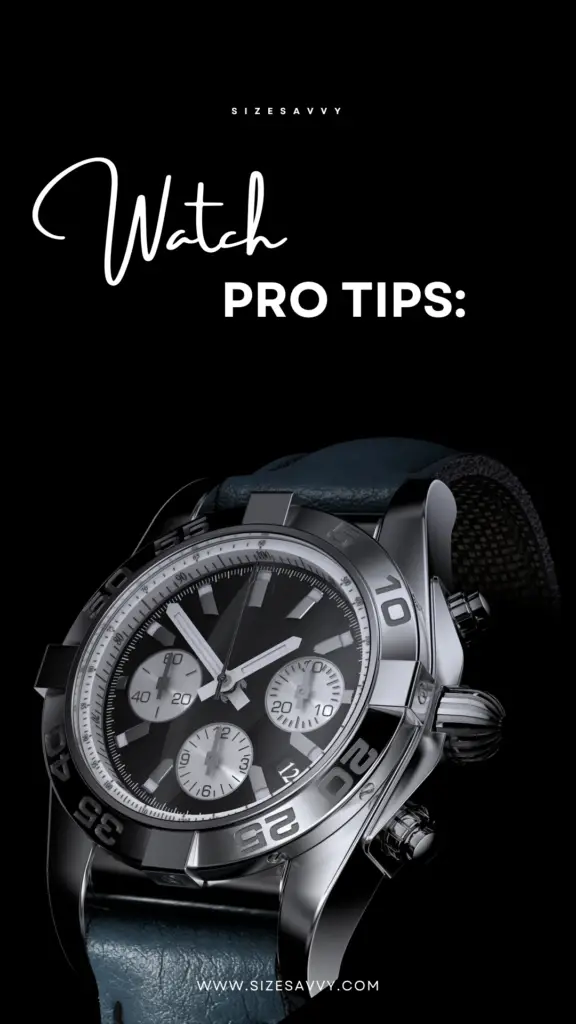
- Metric System Matters: Use millimeters (mm) for watch size measurements, as it’s the standard unit.
- Be Gentle: Avoid applying excessive pressure while measuring, as it can damage the watch.
- Curved Case Considerations: If the watch has a curved case, a ruler might not provide an accurate measurement. Opt for a caliper or seek jeweler assistance.
- Beyond Size: Remember, watch size is just one piece of the puzzle. Consider your wrist size and personal preference for fit and comfort when making your final decision.
Watch Size Recommendations by Age Group
| Watch Age Group | Recommended Case Diameter (mm) | Notes |
|---|---|---|
| Children (3-7 years old) | 20-28 mm | Smaller size for developing wrists and easier time-telling |
| Children (8-12 years old) | 28-34 mm | Slightly larger size for growing wrists |
| Teenagers (13-19 years old) | 34-38 mm | Wider range to accommodate diverse wrist sizes and preferences |
| Adults (20-40 years old) | 38-42 mm | Standard size for most adults, though smaller wrists may prefer 36-38 mm and larger wrists can handle 42-46 mm |
| Adults (40+ years old) | 38-44 mm | Similar to younger adults, with some opting for slightly larger sizes for better readability |
Important to Note:
- These are general recommendations and may vary depending on individual wrist size and preference.
Conclusion: By following these steps and keeping these tips in mind, you’ll be well on your way to finding a watch that not only complements your style but also sits comfortably on your wrist, ensuring a timepiece you’ll cherish for years to come.
Demystifying Watch Size Measurements
Why is it important to measure watch size?
Watch size plays a crucial role in both aesthetics and comfort. Choosing the right size ensures the watch complements your wrist size and doesn’t look too bulky or small. It also affects how comfortably the watch sits on your wrist.
What’s the difference between case diameter and lug-to-lug distance?
Case diameter measures the widest part of the watch case itself, excluding the crown and pushers. Lug-to-lug distance measures the distance between the tips of the lugs, which is where the strap or bracelet attaches.
Which tool should I use to measure watch size?
A caliper is the most accurate tool, offering precise measurements for both diameter and thickness. If you don’t have a caliper, a ruler can be used for an approximate diameter measurement, but it might not be as accurate, especially for curved cases.
What are some things to keep in mind while measuring with a ruler?
Ensure you’re measuring in millimeters (mm), the standard unit for watch size. Be cautious not to apply pressure while measuring, and remember that a ruler might not be ideal for curved cases.
What other factors should I consider besides size when choosing a watch?
While size is important, consider your wrist size, personal preference for fit (snug or loose), and overall watch style, including the thickness and design of the case and strap/bracelet.
Where can I find information about the size of a specific watch model?
You can usually find the case diameter and sometimes the lug-to-lug distance listed in the product specifications on the manufacturer’s website or retailer’s website. You can also consult online resources or watch reviews that might mention these measurements.

